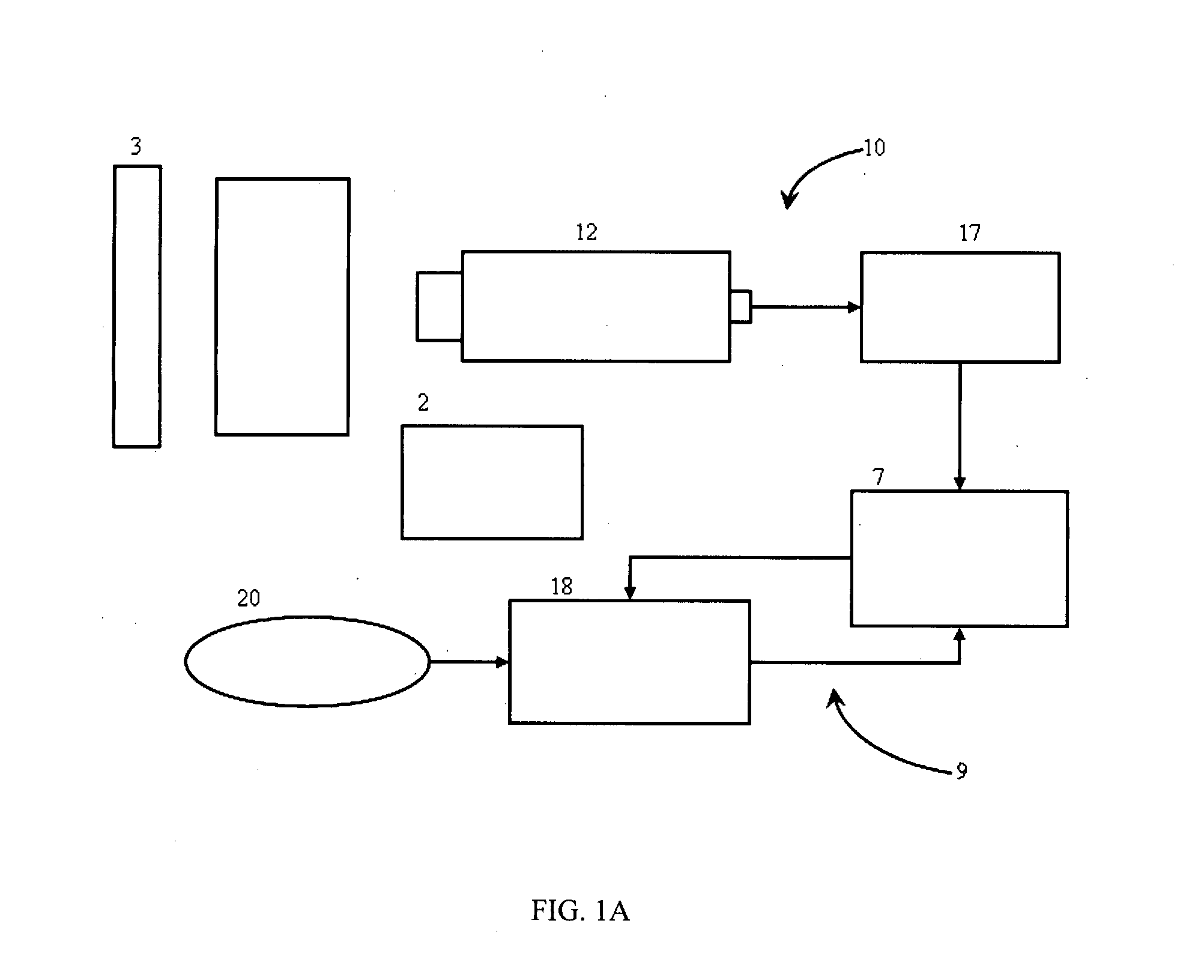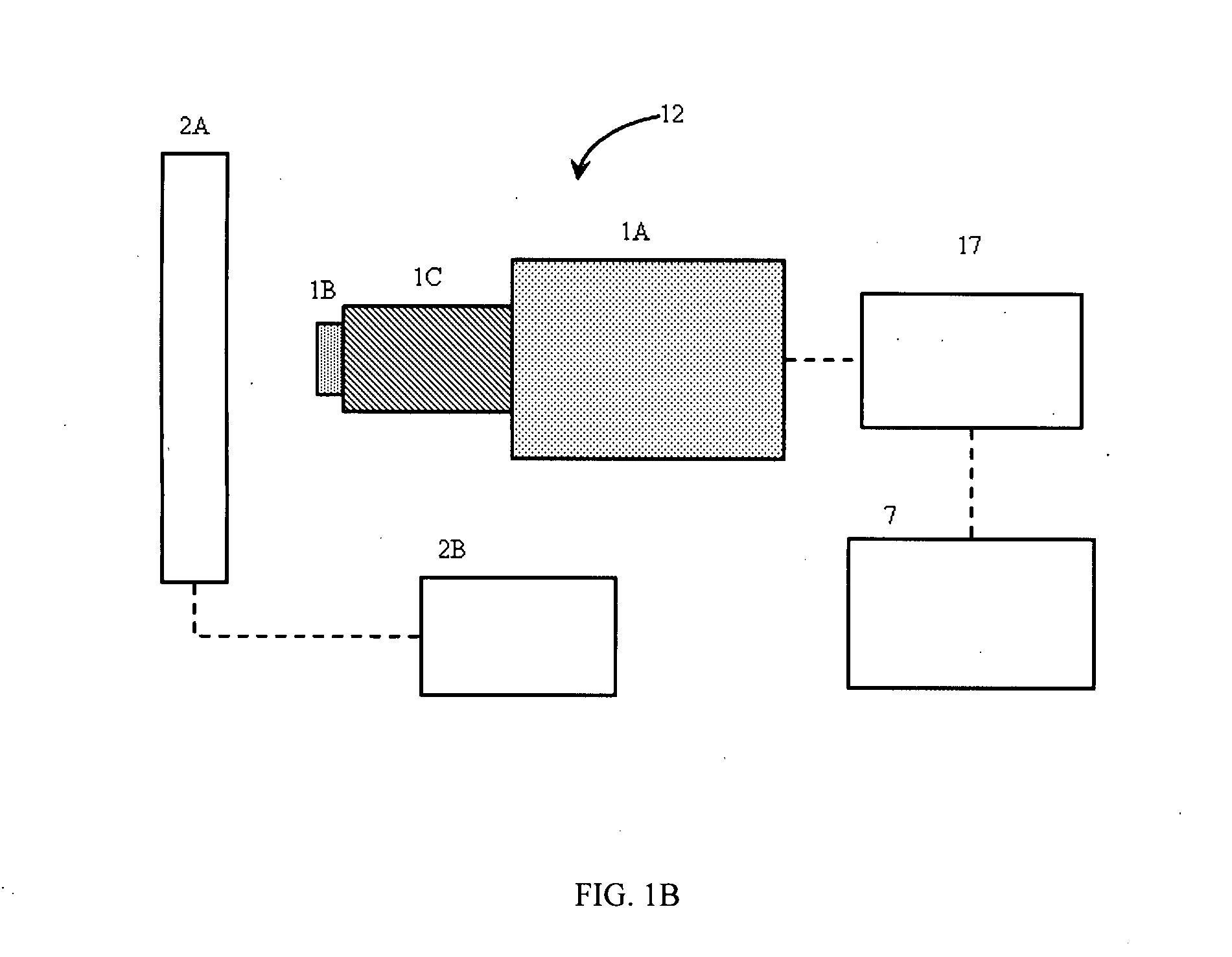Method and system for wholesomeness inspection of freshly slaughtered chickens on a processing line
a processing line and chicken technology, applied in poultry processing, image data processing, instruments, etc., can solve the problems of limiting production throughput, inspectors prone to fatigue and repetitive injury problems, and inspection process subject to human variability, so as to quickly and accurately identify wholesome chickens.
- Summary
- Abstract
- Description
- Claims
- Application Information
AI Technical Summary
Benefits of technology
Problems solved by technology
Method used
Image
Examples
example 1
[0061]Calibration of the imaging system 10 was conducted for the acquisition of hyperspectral chicken images on a commercial processing line. Following the cooling of the EMCCD detector to the necessary −70° C. operating temperature, spectral images were acquired using a mercury-neon pen lamp. With 1 by 4 binning (4× binning in the spectral dimension), the mercury and neon reference peaks shown in FIG. 5 were utilized for spectral calibration; the mercury peaks at 435.84 and 546.07 nm were found to correspond to the 8th and 25th bands, respectively, and neon peaks at 614.31, 640.23, 703.24, and 724.52 nm corresponded to the 35th, 39th, 49th, and 52nd bands, respectively. FIG. 6 shows a plot of the second-order polynomial regression that was calculated from the mercury and neon spectral peaks to calibrate the spectral axis: wavelength (nm)=0.01X2+6.03X+393.70(r2=0.9999)
where X is the spectral band number. The imaging spectrum ranged from 399.94 nm (the first band) to 750.42 nm (the 5...
example 2
[0062]Using the calibration from Example 1 above, hyperspectral images were acquired using imaging system 10 for 5549 wholesome chicken carcasses and 93 unwholesome chicken carcasses on a 140 bpm commercial processing line, for analysis to optimize the ROI size and location and to determine the key intensity waveband and ratio wavebands to be used for online inspection. The wholesome or unwholesome condition of the birds on the line was identified by an FSIS veterinarian who observed the birds before they passed through the illuminated IFOV, where the imaging system acquired 55-band hyperspectral data for the chicken carcasses. FIG. 7 shows example images, at four bands, of chickens on the processing line, including one unwholesome chicken (fifth from the left) among the series in the image. The images shown were compiled using image data from the 1st, 30th, 36th, and 55th spectral bands, corresponding to 400 nm, 580 nm, 620 nm, and 750 nm.
[0063]The hyperspectral images were analyze...
example 3
[0066]The optimized ROI and key wavebands determined in Example 2 above were used for multispectral inspection of over 100,000 chickens on a 140 bpm processing line during two 8-hour shifts at a commercial poultry plant. FIG. 14 shows examples of chicken images highlighting the ROI that was used for online inspection. The inspection program specifically determined the 40%-60% ROI for each bird, which was clearly affected by the size and position of the bird. The ROI was a regular rectangular area for a bird whose body extended past the lower edge of the image, such as the first bird in FIG. 14. For other birds, the presence of background pixels near the lower edge of the image resulted in irregularly shaped ROIs. FIG. 13 shows a scatter plot for the chickens inspected during the first shift, by the number of ROI pixels and the number of ROI lines for each bird. For 99% of the birds imaged during the first 8-hour inspection shift, imaging system 10 acquired between 15 and 40 ROI line...
PUM
 Login to View More
Login to View More Abstract
Description
Claims
Application Information
 Login to View More
Login to View More - R&D
- Intellectual Property
- Life Sciences
- Materials
- Tech Scout
- Unparalleled Data Quality
- Higher Quality Content
- 60% Fewer Hallucinations
Browse by: Latest US Patents, China's latest patents, Technical Efficacy Thesaurus, Application Domain, Technology Topic, Popular Technical Reports.
© 2025 PatSnap. All rights reserved.Legal|Privacy policy|Modern Slavery Act Transparency Statement|Sitemap|About US| Contact US: help@patsnap.com



